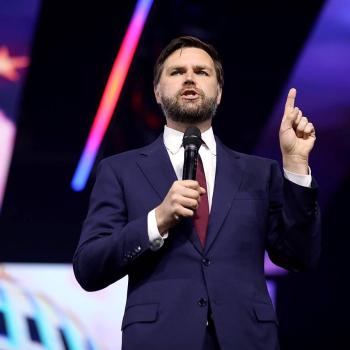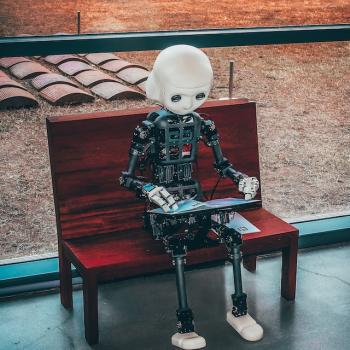In previous consideration of the term “constitutive,” it was suggested that persuasion (writing, speaking, persona, body language, lifestyle, and so on) is that which defines and “makes real” a culture in language and its performance. A spoken word, as such, may become something like a “definition” of a character for the speaker and at least one other (the audience), forming a community through a language provided by culture and modified by its use. I would like to continue on this theme, exploring briefly how a consideration of imagination as a kind of knowledge can “deal” in images independently of sense, opening the possibility of “reordering” objects not derived from sensory experience.
Positivism and the dominion of technology, as has been argued here as elsewhere, are destructive to the formation of local, organic community. But there is a vision, embedded in language, which allows the use of language presupposed to a set of assumptions about the world, valuing family first. This is a vision of the world incorporative of all that is “possible” and prescriptive in that it assumes a Good (for us Catholics, Christ in the Eucharist – full communion while on earth) for which we can strive.
A habitual method of argument, in part, reveals an underlying structure of thought and assumption. The use of language, this is to say, matters: it is sermonic, as to “speak” and “act” communicatively is to not only express a view of the world but to remake a small part of the world, to influence action, and to invite others toward participation. “Persuading” others to confront, for example, a cultural or spiritual crisis requires “speaking” to premises accepted by an audience. Adaptation to audience is a requirement for effective discourse. A speaker should reinforce the presence of premise with an argument capable of rousing the desired reaction. The “art” of creating such a presence can be employed through rhetoric via the techniques of persuasion. Rhetoric “comprehensively considered” is an art of emphasis.
The speaker is unlike the logician in that not all of the reasoning will be enumerated. The procedures of discovery for how interaction is mediated, and of concepts of audience, are methodological functions not dissimilar from “constitutive rhetoric” insofar as they are concerned with the composition of “effective” persuasion. There is not an assumption that humans may utilize neutral, objective, and scientific communication. The New Rhetoric, a truly outstanding work, contends: “The necessity for a univocal language, which dominates scientific thought, has made clarity of concepts an ideal which one feels bound to try and achieve, forgetting that this very clarity may stand in the way of other functions of language.”
There is, rather, an invitation not simply to follow a “valid reasoning” but to respond to a presentation of reality – to agree with the speaker’s interpretation of the world that “is.” Language, I believe, can shape our understanding of reality. To adopt a language, in other words, (patterns, resonances, assumptions, and so on) is to “enter” a world. Arguments based on premises that an audience can accept are crucial because the adherence of an audience is a measure of validity. The “most effective way” to disqualify a fact or truth is to show its incompatibility with other facts and truths which are more certainly established. Therein is an invitation to imagination, and to an engagement of the constitutive: arguments over values require a partnership of those partaking in a discourse mutually constructed and responsive. The elements of communication are not “fixed” in advance. There are ongoing definitions of action, reaction, and symbolism that form and reform identity, a hard to define changing social of relations. To draw an audience in to shared assumptions and biases, an act of constitutive rhetoric, begins with an embedded culture present in any audience.
To some extent, humans “become” the language they speak, learning modes of thought and expression that can and do change them. Culture, embedded in minds and imaginations, “creates” certain ways of imagining the world (in both others and ourselves), and certain ways of defining value, and certain ways of conceiving of the nature of reason. To learn the “language of a culture” is to learn a set of habits of mind and attention, of forms of expression and verbal action, and these mark our minds. Much of modern humanity clings to a “split” of the “world as it is” (value-free nature vs. man’s epiphernomenal valuings) and the “world as it is inquired into” (fact questions vs. value questions) as a religious conviction. In contrast, a development of community to discuss shared concerns needs the creations of symbolic exchange. If man is essentially a rhetorical animal, his essential human act is that of making himself into a self, in symbolic communion.
Culture is a power to name reality. And the power to name reality (as through law as an arbiter of reality) is no small matter. If cultural resources are produced, what are the contents of its networks and social institutions? It seems to me obvious that signs, rituals, and symbolisms play a large part. The efforts at finding some accommodation of imagination, feeling, and envisioning on one hand and rationality on the other have included investigations into metaphor, myth, story, narrative, anecdote, dramatism, and archetypes. These efforts have often had to face the barrier of rationality. People, in thinking they are describing the origin of language and linguistic sign, have in effect projected onto the past an implicit knowledge of the symbol as exists in the present. There is, however, a close tie binding the development of language, history, and discourse as a foundation of the signifying processes.
My concept of the constitutive, similarly, is that the social practices of communication are inseparable from its ideas and theories in interaction – meaning that rhetorical communication as a “distinct” and “separate” entity from persons and social worlds is itself a socially created and sustained way of “talking” about communication. The constitutive, it follows, is all around us. More specifically, a discourse functions constitutively when it “makes” something possible and when the possibilities of a condition are “created.” A creating process of identification with constituency, through persona and argumentation and symbols and so on, draws out qualities of character an audience values, or is disposed to value through sentiment and assumption. The successful speaker of the constitutive can here find a great rhetorical power to move and influence an audience, even if there is “poor” rhetorical form and delivery.
“Characters” of the speaker are imparted to constituency, partly “made” by language and partly by personal character formed through identity and personality. A “modernist” might lament the “flux” of language, but the constitutive rhetor might argue the language and methods of “science” are not suitable to the structures of human communicative experience. Herein are the arts of constitution and reconstitution of self, language, and community: an imagination that sees a human world constantly being created and a rhetoric emerging from an imaginative vision and ethos firing the imagination of a public, allowing them to share the imaginative vision of the rhetor.












